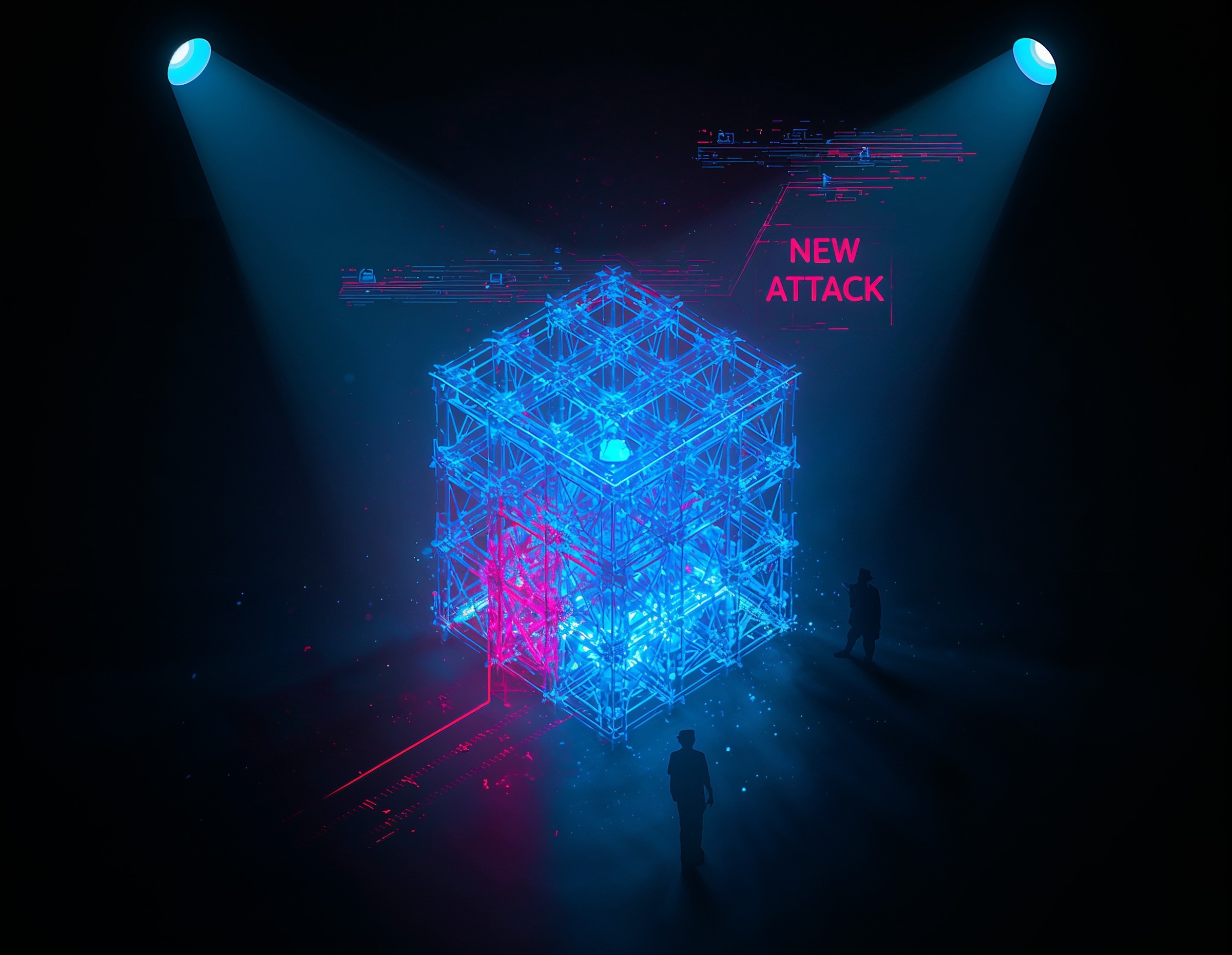Confidential computing promised sealed computation even on untrusted hosts. Today, TEE.Fail shows how that promise bends under physical scrutiny. The attack uses a low-cost interposer on DDR5 to observe and manipulate memory traffic that belongs to trusted execution environments. Consequently, secrets handled inside Intel TDX and AMD SEV-SNP enclaves become observable under realistic lab conditions. Therefore, cloud operators and security teams should revisit threat models that assumed memory encryption alone was sufficient.
What TEE.Fail Actually Changes in the Threat Model
Most guidance treats enclaves as strong against software compromises yet assumes reasonable physical protections. TEE.Fail shifts that line. By placing an interposer between the CPU and DDR5 DIMMs, an attacker can passively watch or actively perturb encrypted memory transactions. Although data looks scrambled, deterministic encryption on the bus reveals structure and supports powerful manipulation. As a result, a lab-grade adversary or an insider with brief access can undermine enclave confidentiality without patching a single byte of software.
Why DDR5 Matters Here
Earlier demonstrations largely focused on DDR4, and defenders could argue that newer platforms raised the bar. However, TEE.Fail demonstrates techniques against DDR5, which is the baseline for modern TDX deployments and many SEV-SNP servers. Therefore, organizations that migrated to newer hardware for stronger protections must reassess exposure rather than assume immunity.
Impact on Intel TDX and AMD SEV-SNP
In practice, the attack enables observation of enclave memory patterns and, under some conditions, controlled replays or aliasing that break security assumptions. Because AES-XTS on the memory bus is deterministic per physical address and often lacks integrity or freshness, crafted replays can coerce secure environments into accepting attacker-chosen ciphertext as legitimate data. Consequently, secrets may leak or attestation can degrade if integrity is insufficiently enforced. Additionally, the human cost is modest: researchers describe interposers that well-resourced hobbyists could assemble, which removes the “nation-state only” comfort many risk registers relied on.
How TEE.Fail Compares to Recent Work
Battering RAM showed how a cheap DDR4 interposer can redirect addresses and replay ciphertext to defeat SGX and SEV-SNP assumptions. WireTap and related efforts mapped memory behavior to extract enclave material on older platforms. TEE.Fail extends these ideas to DDR5, which broadens the risk to current-generation confidential computing. Therefore, the narrative changes from “legacy platforms are brittle” to “the bus remains a weak link even on modern systems,” which is the message defenders must internalize now.
Attack Requirements and Realistic Scenarios
The adversary needs brief physical access, a prepared interposer, and time to stage and collect traces. Although that sounds niche, several scenarios fit: an insider in a colo, a compromised maintenance workflow, a malicious supply-chain touchpoint, or a targeted operation against a high-value enclave. Because cloud tenants often place material keys and proprietary models inside enclaves, a single successful operation can yield outsized impact. Moreover, once an access path exists, repeated extractions become easier than a one-off heist.
What to Detect and Where to Look
Purely software-level indicators rarely reveal a bus interposer. Nevertheless, defenders can watch for chassis intrusion events, DIMM-slot anomalies, and service interruptions aligned with suspected tampering. Additionally, performance counters and timing drift around memory transactions may expose interposition overhead in tightly profiled environments. At the platform layer, unexpected attestation variance, integrity failures, or repeated re-attestation requests during steady workloads can hint at manipulation. Finally, correlate enclave behavior with host maintenance windows or physical security logs to surface patterns that software telemetry alone cannot see.
Mitigations That Help Today
Because memory encryption without integrity or freshness remains vulnerable to replay and aliasing, organizations should weigh platforms that pair encryption with robust integrity verification. Meanwhile, treat enclaves as high-value keys’ consumers, not their custodians: keep root keys inside HSMs, derive session material ephemerally, and rotate aggressively. In addition, restrict physical access, harden chassis sensors, and enforce procedures that require dual control during maintenance. For cloud fleets, separate tenants that demand strict protection from hardware-adjacent threat models, and document the residual risk clearly. Finally, pressure vendors for bus-level protections that combine encryption with integrity and replay resistance rather than relying on deterministic modes alone.
Risk and Prioritization for Enterprises
If your business stores cryptographic material, proprietary ML models, or regulated datasets inside enclaves, you should act first. Start with policy and procurement: require vendors to state whether memory integrity and anti-replay are present and how they are enforced. Next, adjust your secret-management architecture so enclaves never hold long-lived root keys. Then, update your attestation pipelines to flag anomalies rather than treating attestation as a binary gate. Because realistic attacks still need access, strengthen physical controls and audit trails where your servers live.
Practical Validation Steps This Week
Confirm which servers run DDR5 with TDX or SEV-SNP and document their memory-protection properties. Review attestation logs for drift, and test secret-rotation drills to ensure that compromise windows stay short. Align your incident response with scenarios that include physical tampering, not just software exploitation. Finally, brief leadership on the updated risk picture so procurement, compliance, and security operations move together rather than piecemeal.
FAQs
What is TEE.Fail in one sentence?
It’s a DDR5 memory-bus interposer attack that undermines enclave confidentiality on modern Intel and AMD platforms.
Does it require exotic equipment?
No. A determined team can build the interposer with modest cost and standard lab skills, which increases practical risk for targeted environments.
Is software patching enough to stop it?
Not today. The weakness sits at the memory-bus layer; therefore, mitigations involve platform choices, integrity protections, physical controls, and secret architecture.
How should we treat enclave-resident secrets now?
Keep root keys outside enclaves, derive short-lived material inside them, rotate aggressively, and validate enclave behavior with richer attestation and integrity checks.
What makes DDR5 notable compared to prior attacks?
Earlier work centered on DDR4; TEE.Fail demonstrates that similar ideas scale to DDR5, which powers many current confidential computing deployments.










